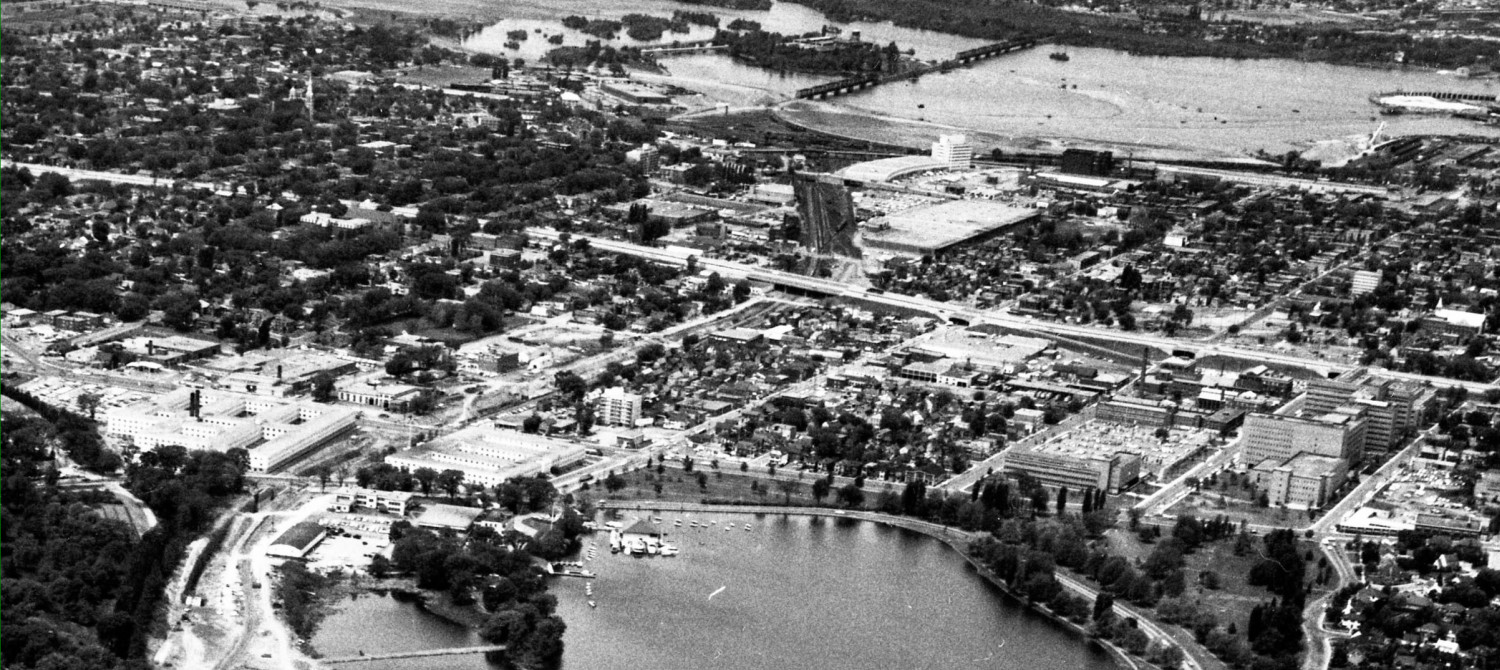The other day I commented to a neighbour that I hadn’t seen an across-the-street neighbour for a long time. “Oh, she died last year … or was it the year before?” Shocking news, surprising, and yet not surprising. After all, while I live on a very friendly stub end street and know many neighbours by name, and some I even know what they do or what their interests are, there are others who have lived here for 15 years and never said hello.
Our “funeral homes” are large and cool cold frigid. At least in downtown neighbourhoods they are occasionally still on main streets, but the City and activists have been pushing them out to industrial-zoned areas for decades. It’s no wonder the drive through viewing is popular. With self driving cars one won’t even have to be in the auto mobile.
In older cultures like Italy, the fabled La Dolce Vita (the good life) still has elements of La Dolce Morte (my term, don’t look it up).
above: sign on an alleyway to the rear door of a church
Here on a Venetian square is a mortuary, where the body can be stored pending burial:
above: mortuary building to the rear, foreground is well and tap, don’t ask
Depending on the season and other circumstances, immediate burial may sometimes not be possible, nor would keeping the body in the deceased’s house be practical. Mortuaries are still to be seen near Ottawa in certain old church yards, particularly in rural areas, where grave digging was not possible in winter, nor could mourners come any distance to attend due to snow.
To the left of the Venetian mortuary building shown above is the funeral arrangers:
Just like church bells used to ring out to celebrate weddings and more importantly, to notify others that the prize has been won by someone and was now out of the competition, and off limits, the old world custom of public notices remains in Italy:
These notices both inform neighbours and acquaintances.
There is nothing in Ottawa to tell me someone whose name I didn’t know died two blocks away, but she and I discuss her garden in passing, or the lady that walks the two black dogs … these are parts of the nodding neighbours that make up a liveable city and we now lack a way of keeping each other abreast of such news. Of course, in a drivable city, no one would see such notices and the essential anonymity of the suburb prevails.
Are the equivalent of these death notices our “estate sale” and real estate “for sale” signs?
Of course, in Venice the burial customs are of interest.
The hearse boat:
Burial is on a special island in the lagoon: Isola di San Michele: when there was more people living – and dying – in Venice there was a need for several landing stages. Now there is just one:
Crypts are above ground. Coffins are placed on shelves, rather like filing cabinets. At flood tides, the tombs flood as well, so the coffins float around inside.
Rather more appealing are small cemeteries in Greece, where the whole cemetery might have only a dozen above ground limestone sarcophagi. The body is placed inside, the limestone decays the flesh in the fabled 40 days, and then the bones are removed and ground up. The burial plot is now ready for re-use. You’ll pass it every day on your errands or on your way to school.
In Herculaneum, rather further south in Italy, a group of citizens was killed in the 79AD eurption of Mt Vesuvius. Caught in ash and mud, they became petrified. Most notable is their fine health and excellent teeth in a society that lacked sugar:
In Austria, I browsed an interesting cemetery adjacent an Augustinian monastery. There were remarkably few graves for such an ancient town. Turns out the plots are only rented, then re-used, usually after seven years. However, smaller towns now have less population pressure. We met a lady tending her husband’s grave. When she dies, his bones will be removed and she will be laid to rest. For a time. Hmm.
Like so many things in North America, our cemeteries don’t recycle space but spread and sprawl endlessly. There is something to be said for local cemeteries right in the community to remind us of the circle of life. I spent my youth in the Maritimes, where country churchyards brought the dead to the foreground.
Oh, did I mention I updated my Will last week?













Your readers will not permit you to kick the bucket until we actually have a properly operating, pedestrian centred urban environment. Given that criteria, I suspect you face another fifty or sixty years of informed muckraking – Correction – blogging.
Cheers!
I sometimes wonder why I spend nine bucks a month subscribing to the e-shitizen newspaper. Too lazy to cancel, I guess. But then every morning i go to the Obits section and scan it with great care. Even more so as I have hit that decade where I am likely to recognize the names of friends and neighbours.